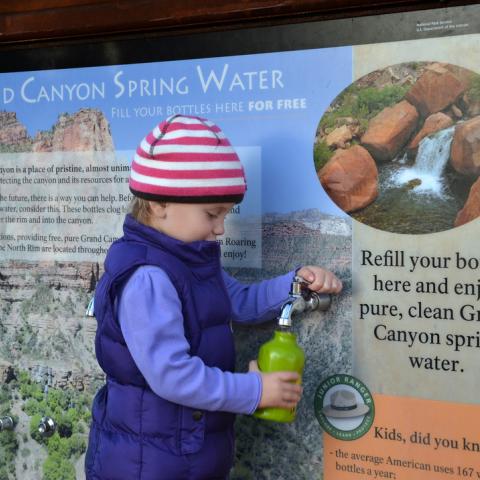As far away from society as you might seem while floating on the Colorado River through Grand Canyon National Park in Arizona, or hiking along its shorelines, heavy metals are polluting the river in concentrations that could pose a health risk.
According to a U.S. Geological Survey study just published in Environmental Toxicology and Chemistry, concentrations of mercury and selenium in the river's food web "regularly exceed risk thresholds for fish and wildlife. These risk thresholds indicate the concentrations of toxins in food that could be harmful if eaten by fish, wildlife and humans."
“Managing exposure risks in the Grand Canyon will be a challenge, because sources and transport mechanisms of mercury and selenium extend far beyond Grand Canyon boundaries,” said Dr. David Walters, USGS research ecologist and lead author of the study.
David Uberuaga, superintendent of Grand Canyon National Park, added, “studies like this continue to educate the public and highlight the threats that face the park and its resources."
The study examined food webs at six sites along nearly 250 miles of the Colorado River downstream from Glen Canyon Dam within Glen Canyon National Recreation Area and Grand Canyon National Park in the summer of 2008. The researchers found that mercury and selenium concentrations in minnows and invertebrates exceeded dietary fish and wildlife toxicity thresholds.
Although the number of samples was relatively low, mercury levels in rainbow trout, the most common species harvested by anglers in the study area, were below the EPA threshold that would trigger advisories for human consumption.
“The good news is that concentrations of mercury in rainbow trout were very low in the popular Glen Canyon sport fishery, and all of the large rainbow trout analyzed from the Grand Canyon were also well below the risk thresholds for humans,” said Dr. Ted Kennedy, USGS researcher and co-author of the study.
“We also found some surprising patterns of mercury in rainbow trout in the Grand Canyon. Biomagnification usually leads to large fish having higher concentrations of mercury than small fish," he said. "But we found the opposite pattern, where small, 3-inch rainbow trout in the Grand Canyon had higher concentrations than the larger rainbow trout that anglers target. This inverted pattern likely has something to do with the novel food web structure that has developed in Grand Canyon.”
Airborne transport and deposition -- with much of it coming from outside the country -- is most commonly identified as the mechanism for contaminant introduction to remote ecosystems, and this is a potential pathway for mercury entering the Grand Canyon food web. Also, long-range downstream transport from upstream sources can deliver contaminants to river food webs. This is the case for selenium in this study, where irrigation of selenium-rich soils in the upper Colorado River basin contributes much of the selenium that is present in the Colorado River in Grand Canyon.
Exposure to high levels of selenium and mercury has been linked to lower reproductive success, growth, and survival of fish and wildlife. No human consumption advisories are currently in place for fish harvested from the study area. However, to assess potential risks to humans that may consume fish from Grand Canyon or Glen Canyon National Recreation Area, additional studies are planned.
Research partners in this study include the Cary Institute of Ecosystem Studies, Montana State University, and Idaho State University.




 Support Essential Coverage of Essential Places
Support Essential Coverage of Essential Places







Comments
what about campers on the river in the canyon who treat and drink river water?
A great question! You can find your answer at the following link:
http://www.outdoorgearlab.com/Backpacking-Water-Filter-Reviews
(The short answer is some do filter heavy metals)